How AI Is Changing SEO in Multifamily Marketing
The rules of search marketing are changing under our feet. Imagine a prospective renter asking ChatGPT (not Google) to recommend the best apartment community in your city. Will your property even appear in that AI-generated answer?

In an era of generative AI and fragmented search behavior, multifamily marketing executives face tough questions. Can you trust algorithms with your brand’s story? Who holds authority when AI can generate content on the fly? And with renters finding apartments via TikTok, Instagram, or voice assistants, how do you measure marketing impact when traditional Google Analytics might not capture the whole picture?
These aren’t hypothetical questions; they’re strategic dilemmas CEOs, COOs, and Marketing Directors in the multifamily industry must contend with right now.
Welcome to the new SEO reality, where Google is still critical but no longer the only game in town.
The Rise of Search-Everywhere Optimization
Not long ago, “SEO” was practically synonymous with “Google SEO.” Today, that’s no longer the case. Renters (especially younger ones) increasingly turn to alternative discovery platforms, forcing multifamily marketers to optimize for search everywhere, not just Google.
In fact, Google’s own research found that nearly 40% of Gen Z prefers using TikTok or Instagram for search instead of Google. Instagram has now risen to the second-largest search platform globally, reflecting a dramatic diversification in search behavior. From social media hashtags to YouTube tutorials to Reddit threads, people are finding information (including apartments and local recommendations) in many places that never show up in Google Analytics.
To put things in perspective, Google still leads in traditional search engine usage, but even that dominance is starting to waver. In 2023, Google’s search engine market share dipped below 90% for the first time in a decade.
And if you broaden the definition of “search” to include all platforms, some analyses peg Google at only about 18.8% of global search activity. The rest is happening on platforms like TikTok, Instagram, YouTube, Amazon, Snapchat, voice assistants, and now AI chatbots.
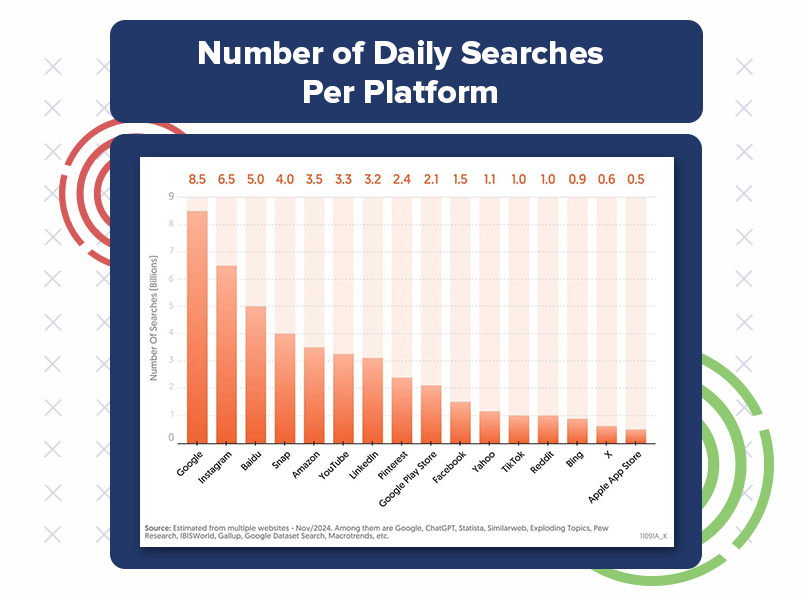
In other words, SEO strategies can’t rely solely on Google anymore. This is the advent of “search-everywhere optimization,” where the goal is to make your content visible wherever your audience might be searching.
For multifamily marketers, this shift is huge. Prospective renters might discover your property through an Instagram neighborhood tour, a TikTok video of your amenities, a question answered on Reddit, or a query to Alexa or Siri. They might even ask ChatGPT or another AI assistant for “the best pet-friendly apartments in {City}” and get an AI overview of options.
If your marketing strategy is focused only on ranking in Google’s search results, you risk missing swaths of these prospects. The “new SEO” means embracing a fragmented ecosystem and crafting content that’s optimized for multiple search engines and social platforms.
Practically, this could involve:
- Social SEO: Optimizing your social media profiles and posts with keywords (yes, people search within social apps). For example, ensuring your Instagram captions include local neighborhood terms or amenities can help you appear in Instagram search results. TikTok SEO is also a real thing; savvy brands are including spoken keywords in their TikTok videos and text overlays so that TikTok’s algorithm surfaces them.
- Visual Search: Recognizing that renters often search visually. Instagram and TikTok are essentially visual search engines. A strong visual content strategy (high-quality photos, short videos, virtual tours) optimized with the right tags and descriptions can capture those searchers.
- Alternative Platforms: Don’t forget platforms like YouTube (for longer video content), Pinterest (for apartment decor inspiration searches), and even voice search on smart speakers. The rise of voice search is notable — 58% of consumers have used voice search to find local business information, like nearby apartments. If someone asks a voice assistant about your property, will it have the information (and reviews) needed to recommend you?
The bottom line: your multifamily marketing plan must treat SEO as broader “search everywhere” optimization. It’s about meeting potential renters on their terms, whether that’s a Google query, a social media search, or an AI chatbot conversation. The future of SEO lies in embracing this multi-platform reality and ensuring your brand is present and persuasive across all of it.
Hype vs. Reality: AI-Driven Search Traffic in 2025
Of course, no conversation about the future of search is complete without talking about generative AI tools like ChatGPT. Over the past two years, we’ve heard countless predictions that AI chatbots will revolutionize search and siphon traffic away from traditional search engines. Some multifamily marketers might be wondering if “ChatGPT SEO” is now a thing, and whether they should be optimizing content for AI referrals. The truth requires cutting through some hype.
There’s no doubt that ChatGPT’s usage has skyrocketed. OpenAI’s ChatGPT reached over 400 million weekly users by early 2025, an astonishing adoption rate. And indeed, websites have started seeing traffic coming from ChatGPT’s citations. In fact, referrals to publisher websites from ChatGPT have grown eightfold in the span of six months.
But before we declare the death of Google, let’s look at the actual impact: even after an 8x surge, AI-driven search traffic still accounts for less than 0.1% of total visits for those sites.
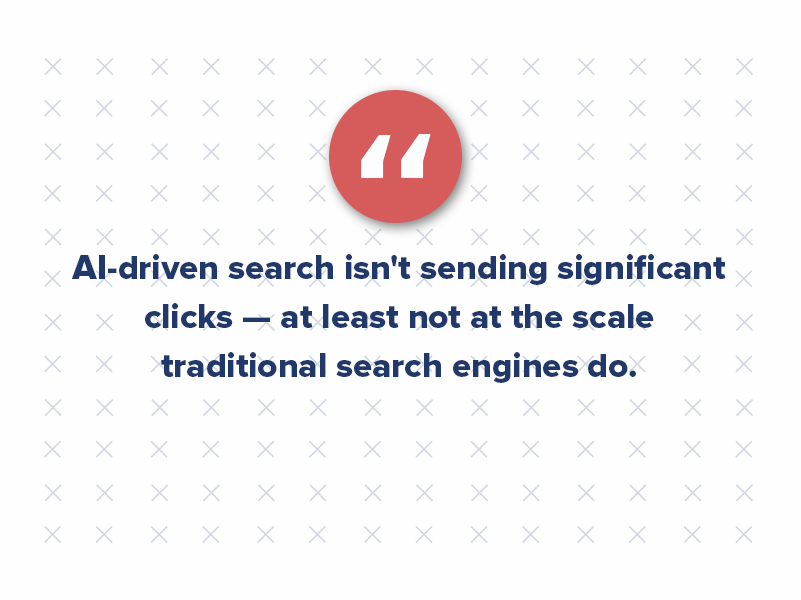
In other words, 99.9% of traffic is still coming from traditional channels. ChatGPT might be sending a trickle of extra visitors, but it’s nowhere near replacing Google, direct traffic, or even social media referrals in volume.
ChatGPT’s popularity doesn’t (yet) equal massive web traffic. Despite the buzz, ChatGPT referral traffic is still a tiny slice of the pie for most websites.
For example, fourteen leading news publishers received a combined 3.5 million visits from ChatGPT in one month — sounds great, until you realize those sites had 3.8 billion total visits that month. That’s why AI-driven search made up under 0.1% of traffic. This gap between hype and reality is critical as you plan your 2025 SEO strategy.
Yes, you should watch ChatGPT and similar AI platforms, but don’t bet the farm on them just yet. Why is AI referral traffic so small despite the huge usage of tools like ChatGPT? The fundamental issue is user behavior. Generative AI tools often answer questions directly on their own platform, without sending the user to an external site.
If a renter asks ChatGPT, “What are some good apartments in Downtown Seattle?”, ChatGPT might generate an answer drawing from various sources (and cite those sources). The user gets a convenient summary right there in the chat interface. They might not feel the need to click through to every source cited.

In essence, AI-driven search encourages “zero-click” results even more than Google does — the answer is delivered in full, which is great for user convenience but not so great for your website’s traffic. Publishers and brands are essentially training AI models with their content, and not always getting the click credit back.
So what does this mean for you as a multifamily marketer? Calibrate your expectations. Don’t ignore AI search (it’s growing fast, and those numbers could change), but don’t panic either. Google is still the primary source of SEO traffic for now, with social and direct channels also crucial. Consider AI chatbots as additional discovery tools — if ChatGPT or Bing Chat can cite your content, it’s another way to build brand awareness.
For instance, an AI answer might mention your property or quote your blog post about renting tips, planting a seed in the user’s mind. But that click may never show up in your analytics, so success might look different (brand mentions, not just site sessions).
A savvy SEO strategy keeps one foot grounded in reality and one foot testing the waters of emerging tech. Continue to invest in traditional SEO and content marketing strategies that drive organic traffic (more on that below), while also experimenting with optimizing content for AI. This could mean ensuring your content is well-structured and factual so AI models find it credible and worth citing. It might also mean using schema markup or FAQs on your site that could be pulled into AI answers.

Just remember: AI-driven search is a supplement, not a substitute — at least for now. The worst thing a marketing leader could do is chase the shiny object (AI) at the expense of the proven channels that still deliver 99% of your leads.
Smarter or Just Louder? Generative AI’s Impact on Content Quality
One of the promises of generative AI is that it can make content creation lightning-fast. Thanks to tools like ChatGPT, marketers can now produce blog posts, social captions, and even video scripts in a fraction of the time it used to take.
But this raises a pivotal question: Is generative AI making content smarter, or just making the internet louder? Quantity has skyrocketed — quality, not so much. As an executive overseeing multifamily marketing, it’s critical to discern whether AI is actually improving your content strategy or just adding to the noise.
Let’s face it: AI-generated content has exploded in recent years. It’s never been easier to spin up 1,000-word articles on any topic under the sun. Need 50 variations of a property description for SEO? An AI can give you that in seconds.
But there’s a catch: AI can only regurgitate what’s already out there. As one industry expert aptly asked, is AI content just repackaging existing information?
In many cases, yes. Generative models predict plausible text based on their training data — they don’t generate new knowledge. If everyone in your market is using the same AI tools trained on the same data, you’ll all end up publishing eerily similar, surface-level content.
The result? A deluge of blogs and pages that add volume but not unique value. Content gets louder, but not smarter. On the other hand, original research and insights are the antidote to AI noise.
When your brand produces content based on unique data — say, a proprietary survey of renters, an analysis of your leasing trends, or a case study from your portfolio — you’re creating something AI can’t replicate (at least until it trains on your content!).
Original, data-driven content marketing gives you fresh statistics, novel perspectives, and specific expertise that stand out in search results. It establishes you as a thought leader with true authority, rather than just another content mill.
While generative AI in marketing can boost efficiency, original research remains the key to true authority. In other words, to build brand authority in SEO, you still need human intelligence and creativity behind your content.
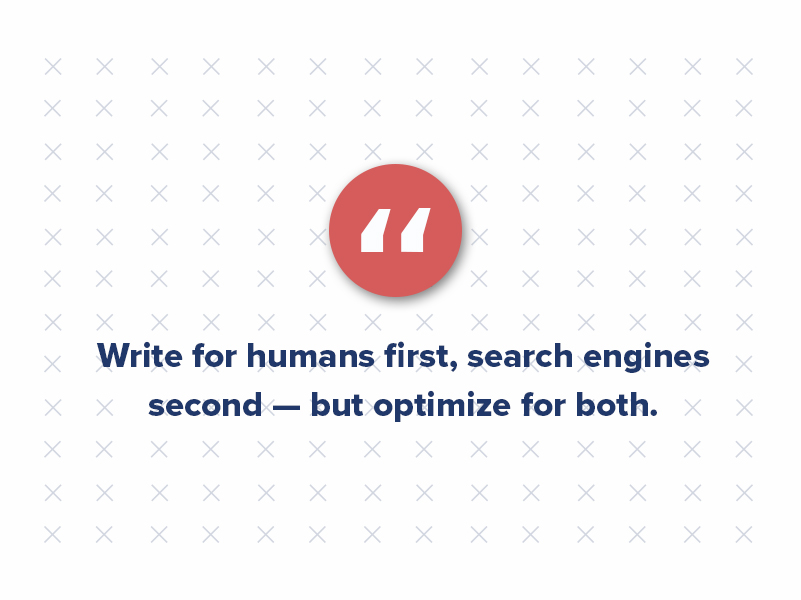
Consider this scenario: A regional property management firm decides to publish a “2025 Renter Preferences Report,” drawing on their internal resident surveys and local market data. They uncover, for example, that 68% of their prospects prioritize commute time over rent price (a hypothetical finding). They publish this report and an accompanying blog post with the data. This kind of original research in SEO is gold — dozens of other sites might quote it, bloggers will link to it, and it gives Google something truly new to chew on.
Meanwhile, a competitor down the road churns out ten AI-written articles like “Top 10 Apartment Amenities” that say nothing readers haven’t already seen. Which content will earn more backlinks, social shares, and trust? The one with original, data-driven insight. As one marketing leader put it, “AI can summarize existing data, but it can’t generate new insights.”
Brands that invest in creating those new insights will dominate search in the long run. This isn’t to entirely dismiss AI’s role. Generative AI is a fantastic tool for productivity — it can help draft outlines, rewrite sections for tone, or generate ideas. It’s being integrated into content marketing strategies everywhere. Use it for the grunt work, by all means. But don’t outsource your expertise.
The best approach is a hybrid one: leverage AI for efficiency, but infuse your content with the human touch, industry experience, and original data that only you can provide.
Think of AI as your copywriting assistant, not your strategist. The brands that win will be those who pair AI’s speed with human strategy and original research. That’s how you create content that’s not just more content, but better content. And one more word to the wise on this topic: transparency. Audiences are becoming savvy about AI-generated content, and some are wary of it.
A recent survey found 94% of consumers believe AI content should be disclosed, and 46% are less likely to trust a brand that doesn’t disclose AI-generated content. This means authenticity is part of content quality, too. If you do use AI in creating content, consider being upfront about it or at least ensure it passes a high bar of quality and fact-checking.
In the end, content that is honest, insightful, and truly useful will rise above the noise, no matter how it’s produced.
The Human Touch: Why User-Generated Content Still Matters
Amid all this talk of AI, it’s easy to forget a simple truth: people trust people. In the multifamily business, leasing is a very human decision — someone is choosing their next home. All the slick AI content in the world can’t replicate the authenticity of a real resident’s opinion or a genuine human voice. That’s why user-generated content (UGC) has become more vital than ever for SEO and marketing performance.
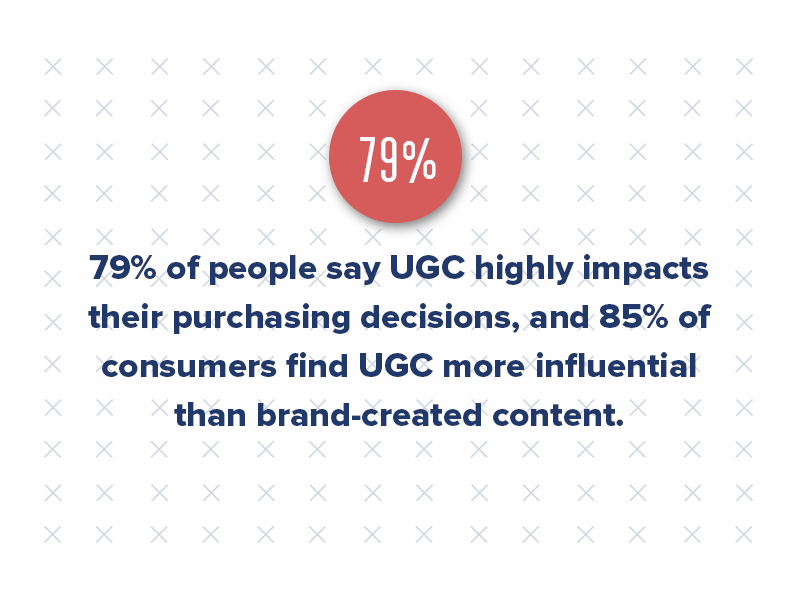
In fact, in a landscape increasingly flooded with AI-produced text and stock marketing copy, the human touch might be your biggest differentiator. Consider these telling statistics: 79% of people say UGC highly impacts their purchasing decisions, and 85% find UGC more influential than brand-created content.
In other words, if someone is on the fence about your apartment community, they’re far more likely to be swayed by a resident’s Instagram post or a review on Apartments.com than by your polished brochure copy. This makes sense — UGC is seen as more authentic because it is more authentic. It’s the digital word-of-mouth. Renters trust the lived experiences of other renters over a corporate website every time.
And notably, this isn’t just a consumer gut feeling; it translates into SEO performance as well. Google’s algorithm itself now prioritizes content like customer reviews, Q&A forum discussions, and social proof in search results.
When someone searches for “Best apartments in Uptown” or “{Your Property} reviews,” Google often showcases UGC (i.e., the star ratings, the review snippets, the questions people ask on Google Maps) right at the top of results.
Authentic voices carry weight. It’s no wonder Google has evolved to surface user-generated content prominently. Reviews and community-driven discussions signal trust and relevance.
And as of 2025, social media algorithms are also favoring UGC more than ever. Instagram and TikTok have tweaked their platforms to push authentic, community posts to the forefront of feeds.
A resident’s raw, unscripted TikTok tour of an apartment can go viral overnight, whereas a slick professional video might get ignored. The takeaway: UGC isn’t just “nice to have” — it’s a cornerstone of modern SEO and brand trust. So, how can multifamily marketers harness the power of UGC?
First, encourage your residents to create content. This could be as simple as running an Instagram hashtag contest for the best balcony garden photos in your community, or asking for testimonials to feature on your website. Every genuine review, rating, and social mention contributes to your “digital footprint” in search. Prospective renters often Google “[Your Property] reviews” — make sure there’s something positive for them to find. Even negative reviews, when responded to sincerely, can boost trust (and yes, engagement on those review pages helps SEO too).
Second, integrate UGC into your own content. Showcase real resident stories on your blog. Include quotes from testimonials in your email marketing. Curate social media posts by residents and share them (with permission). Far from ceding control of your message, this approach builds credibility. As marketing experts point out, brands that harness UGC see higher engagement and better conversions because consumers crave authenticity.
Google knows this — engagement and time-on-page are ranking signals. A heartfelt video testimonial might keep a prospect on your site longer (helping SEO) than a generic AI-written paragraph.
Finally, note that UGC can fill content gaps that your team might not even think of. Residents will discuss things in reviews and forums that aren’t on your radar — maybe praising the dog park during winter, or noting that the on-site gym gets crowded at 6 pm. These bits of information often contain keywords and long-tail phrases future renters search for (“dog-friendly apartments with winter facilities” or “apartment gym peak hours”).
By facilitating and listening to UGC, you indirectly boost your SEO for those niche queries, too. In a time when AI content is everywhere, UGC stands out as real, unscripted, and trustworthy. It’s content that AI can’t fake.
Make it a part of your strategy: encourage it, amplify it, respond to it. Not only will you earn renters’ trust, but you’ll also please the search engines by providing the kind of content they know users want to see.

Featured Snippets Are Fading: Enter Answer Engine Optimization (AEO)
If you’ve been keeping an eye on your Google traffic over the past year, you might have noticed something curious: those once-coveted featured snippets (the answer boxes at the top of search results) are showing up less often for your keywords. And when they do appear, they might be grabbing the answer and yielding fewer clicks to your site.
What’s happening?
In a word: evolution.
Google is transitioning from a “search engine” into more of an “answer engine,” especially with the rollout of its AI-driven features. For multifamily marketers, this means it’s time to pivot from traditional snippet-focused SEO to Answer Engine Optimization (AEO).
First, let’s talk about the decline of the featured snippet. Several recent studies have shown a significant drop in the prevalence of featured snippets on Google since late 2024. In one analysis, the number of queries that yielded a featured snippet fell by 35% between September 2024 and March 2025.
In some niches, the decline was even more dramatic — another dataset showed a 57% drop in snippet occurrence over that period for a set of tracked queries.
The culprit? Google’s new AI-generated answers (often called “AI overviews” in Search Labs) are starting to replace the traditional snippet in many cases.
Instead of a single website excerpt getting the spotlight, Google’s AI might generate a multi-source summary for the user’s query. Even when featured snippets do appear, their ability to drive clicks has diminished. Why? Because if the answer is right on the page, users have less reason to click through.
Recent research by Ahrefs compared search results with and without Google’s new AI overview present. The findings were sobering: when an AI overview was shown, the click-through rate (CTR) of the top organic result plummeted from about 7.3% to 2.6%.
That’s a massive drop in traffic for the site that technically “ranks #1.” In percentage terms, one study noted a 34.5% reduction in organic CTR for top pages when Google’s AI overview was in play.
Essentially, the AI answer is siphoning off clicks that would have gone to the organic results — a trend similar to how old featured snippets sometimes led to “zero-click searches,” but now on steroids. Google’s own CEO has claimed that AI overviews could improve engagement, but early data contradicts that.
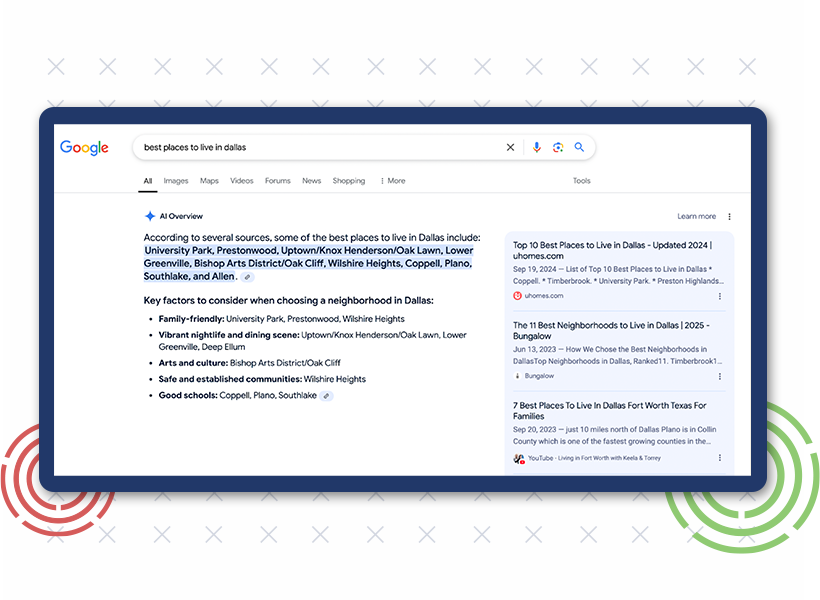
For marketers, this means that even if you maintain your rankings, you might see less traffic coming from those rankings if Google decides to answer the query on the SERP itself.
So, are featured snippets dying? It appears they’re certainly losing prominence. But the need to be the source of answers is not dying — it’s just shifting. This is where Answer Engine Optimization (AEO) comes in. AEO is the practice of optimizing your content specifically to serve as direct answers in these new paradigms.
Rather than just aiming for Rank #1 in a list of blue links, you’re aiming to be the answer that the search engine (or voice assistant, or chatbot) delivers to the user. It’s an evolution of traditional SEO, recognizing that more searches are happening in an answer-oriented context (think Google’s AI summaries, Siri’s spoken answers, Alexa’s responses, etc.).
What does AEO involve? In many ways, it builds on good SEO practices but with extra structure and clarity. Key tactics include:
- Provide Concise, Structured Answers: For common renter questions (e.g. “What amenities do luxury apartments have?” or “How much is the average rent in Uptown?”), make sure your content provides a clear, succinct answer. Use headings, bullet points, and schema markup (like FAQ schema) to signal the structure. AEO is about giving the algorithms exactly what they need to extract a direct answer. If you have a blog post titled “10 Questions to Ask When Renting an Apartment,” you might format it so each question is a header followed by a brief answer. This increases your chances of being pulled into a featured snippet or voice answer box.
- Optimize for Voice Search Phrases: Voice queries tend to be conversational and often phrased as questions or commands (“find me an apartment near the park with 2 bedrooms”). 58% of consumers use voice search for local business info, so it’s crucial to mirror that language in your content. This might mean incorporating Q&A-style content on your site. Think about the exact phrases a renter might speak into Siri or Alexa, and make sure those phrases (or close variations) appear in your copy. AEO and voice search optimization go hand-in-hand.
- Maintain Fast, Mobile-friendly, and Context-rich content: This hasn’t changed – the technical side of SEO (speed, mobile UX, meta tags) still matters for AEO. But additionally, context matters. For instance, if someone asks, “Which apartments in my area have dog parks?”, an AI-powered engine might favor content that directly addresses pet-friendly apartments in that specific area. Ensure you have hyper-local content and that your Google Business Profile, NAP (Name, Address, Phone) data, and local schema are all up to date. That way, if an answer engine is picking “best apartments near [neighborhood]”, your data helps put you in the mix.
- Focus on Intent and Accuracy: AEO is unforgiving to fluff. If your content doesn’t directly answer the user’s intent, it likely won’t be used by an answer engine. During content planning, identify the core intent behind keywords. For example, someone searching “apartment lease guarantor” likely wants to know what a guarantor is and how it works. AEO-oriented content on that topic should jump straight into an explanation, not beat around the bush. And accuracy is paramount – if answer engines find a more authoritative or precise answer elsewhere (or worse, if your content is wrong), you’re out. This is where having original research and clear sources can help (a nice overlap with the previous section). If you can cite a statistic or provide a fact no one else has, you become the authority the answer engine trusts.
It’s worth noting that AEO doesn’t replace traditional SEO; it augments it. You still want to rank well in the regular results, because not every search has an answer box, and many users still scroll. But AEO recognizes that the top-of-page real estate is evolving.

We’re headed toward a search results page that might have an AI summary at the top (with citations), followed by maybe one featured snippet or knowledge panel, and then the list of links. And in voice search, there is often only one answer given. It’s a winner-takes-all scenario. That’s why securing that answer spot can deliver outsized rewards.
Forward-thinking multifamily marketers should start treating AEO as an essential part of their SEO strategy. Answer Engine Optimization means thinking beyond “How do I rank #1 for [keyword]?” to “How do I become the trusted answer for questions my audience is asking?” It’s a shift in mindset from pure keywords to user questions and intents.
![Forward-thinking multifamily marketers should start treating AEO as an essential part of their SEO strategy. Answer Engine Optimization means thinking beyond “How do I rank #1 for [keyword]?” to “How do I become the trusted answer for questions my audience is asking?” It’s a shift in mindset from pure keywords to user questions and intents.](https://criterionb.com/wp-content/uploads/2025/06/Generative-AI-and-SEO-Call-Out-4.jpg)
In practice, this might mean creating more FAQ pages, writing more how-to guides and Q&A style blogs, and using tools like Google’s “People Also Ask” and Bing’s chat queries to research what questions are being asked. If featured snippets are indeed on the decline, then capturing that Answer Engine position (whether on Google SGE, a voice assistant, or an AI chat) is the next big prize.
Google’s SGE: What It Is and How to Adapt
By now, you’ve likely heard of Google’s Search Generative Experience (SGE) — Google’s bold experiment to infuse generative AI into the search results page. For multifamily marketers, SGE is one of the most important developments to watch, as it could fundamentally change how your prospective renters interact with search. Let’s break down what SGE is, how it’s reshaping search, and what you should do to stay ahead.
What is SGE? In simple terms, SGE is Google’s effort to provide AI-generated answers within Google Search itself. Instead of just showing the usual list of blue links, Google can now generate a rich answer at the top of the results for certain queries. This AI-powered summary might include text, bullet points, images, and citations with links to the sources. The idea is to give users a deeper, more intuitive result, especially for complex queries.
For example, a user could type a broad question like “What are the best neighborhoods for young professionals in Dallas with affordable rent?” and SGE would produce a concise overview: perhaps mentioning three neighborhoods, highlighting a couple key stats or insights for each (drawn from various websites), and then suggesting some next follow-up questions. It’s search meets AI meets a bit of a chat-like experience. Google says SGE aims to help people ask more nuanced questions, grasp topics faster with AI summaries, and even accomplish tasks directly from the search interface.
You might have seen examples where SGE can do things like draft an email or generate an image if prompted, though for most search marketing purposes, it’s the Q&A summary that matters. At its core, SGE represents Google’s response to the chatbots (ChatGPT, Bing Chat) that were threatening to upend traditional search. Google is basically saying: “We can do that too, right on our search page.”
Now, how does SGE reshape the search results page (SERP)? From what we’ve observed in beta tests and rolling updates, when SGE is activated for a query, it typically occupies the top of the SERP with a colorful background, spanning the width of the page. The traditional ads and search results get pushed further down. The SGE answer often provides a few key points and then perhaps 3-5 links as citations or “next steps” for the user to click if they want more detail.
In effect, it can function like a super-featured snippet. For multifamily, imagine a query like “Luxury apartments vs budget apartments differences” — SGE might display a short comparison table or list, citing an article that you (hopefully) wrote. The critical impact here is on visibility and clicks. If your content is one of the cited sources in an SGE answer, your brand gets visible at the top in the context of that answer, which is great for exposure.
However, the user might get a lot of info from the AI summary itself, meaning they might not click your link even if you’re cited. SGE, therefore, shifts some visibility from traditional organic results to AI-generated summaries.
If your content isn’t part of those summaries, you risk losing out on traffic and awareness. As one SEO expert put it, this change “changes the game for multifamily marketers” — if your site isn’t optimized to appear in SGE responses, you could be invisible to a segment of searchers. Traditional SEO principles still apply, but they must be expanded to account for how AI curates content.

So, what should multifamily marketers do to adapt to SGE? Here are a few strategies:
- Keep Creating High-Quality, In-Depth Content: This point cannot be overstated. SGE tends to pull from top-ranking, authoritative content to build its answers. Google isn’t inventing information; it’s synthesizing from the best of what it finds. That means your content still needs to earn its way to the top. Comprehensive guides, helpful blog posts, and resource pages that thoroughly answer renters’ questions stand a better chance of being included in SGE summaries. For instance, a well-researched blog on “10 Tips for First-Time Renters” that gains traction could be what SGE pulls from when someone asks a related question. Continue to prioritize original research and expertise as discussed earlier — those qualities make your content more likely to be seen as authoritative. In short, content depth and value matter even more now.
- Optimize for Conversational Queries: With SGE (and AI chat in general), we expect more users to type queries in a natural, question form. They might treat Google a bit like ChatGPT, using complete sentences or very specific questions. Adjust your SEO keyword research to include these long-tail, conversational queries. Consider adding an FAQ section to relevant pages addressing those questions (e.g., “What’s it like living in [Neighborhood]?” or “How do I budget for my first apartment?”). Being optimized for these nuanced questions increases your chances of getting picked up by SGE’s algorithms.
- Ensure You’re Technically AI-Friendly: This is new territory, but early indications are that proper schema markup (like FAQ schema, HowTo schema, etc.), clear headings, and well-structured content can help AI better understand and extract your content. Also, continue following E-E-A-T guidelines (Experience, Expertise, Authoritativeness, Trustworthiness) — Google’s AI is likely tuned to favor content from sources that demonstrate these qualities. For multifamily firms, this means showcasing your expertise (e.g., through author bios, case studies, and citing trustworthy data). If SGE is picking which site’s info to trust in an answer, you want to signal “we know our stuff and can be trusted.”
- Leverage Local SEO for SGE: Multifamily marketing is inherently local. SGE has shown improvements in handling local search queries — for example, “apartments near Central Park under $3k.” Make sure your local SEO is airtight: update your Google Business Profile with complete info and fresh photos, gather Google reviews (which both help traditional SEO and might influence AI results for local intent), and include localized content on your site. If there are common local questions (e.g., “Is [Neighborhood] safe for families?”), consider addressing those on your blog. SGE will likely use data from Google Maps, reviews, and local content when answering location-based questions, so be present in those data sources.
- Monitor and Measure: Start looking at your analytics and Google Search Console data for signs of SGE’s impact. Google is beginning to report when content is shown in AI overviews. You might see impressions for queries where you were cited by SGE without a click. Keep an eye on overall organic traffic and click-through rates on your top queries. If you notice drops that coincide with SGE’s rollout, that might prompt you to double down on AEO tactics or content updates. Conversely, if you see spikes in impressions but not clicks, that could indicate your content is being surfaced in SGE answers. It’s a new kind of metric to wrap your head around: being “visible” even without a click. We might need to start valuing that exposure in a similar way to how we view, say, a billboard impression — it has branding value even if it doesn’t drive an immediate click.
It’s important to remember that SGE is still an experiment. Google is testing and refining it, and it’s not yet available to all users as of this writing. There’s been both excitement and pushback; some users love the new AI answers, others find them confusing or worry about inaccuracies. Google will undoubtedly tweak the feature over time. Maybe SGE becomes the new norm; maybe it gets dialed back.
Regardless, the trend is clear: search results are becoming richer and more AI-driven. As a multifamily marketing leader, staying informed and agile is your best play. In summary, treat SGE as both a challenge and an opportunity.
- The challenge: your content now has to compete in an AI-curated space and not just the old 10 blue links.
- The opportunity: if you can land your content as part of an SGE answer, you gain prime visibility and the halo effect of being “what Google itself summarized.” Adapt your SEO strategy with SGE in mind, and you’ll be positioning your brand for the next generation of search.
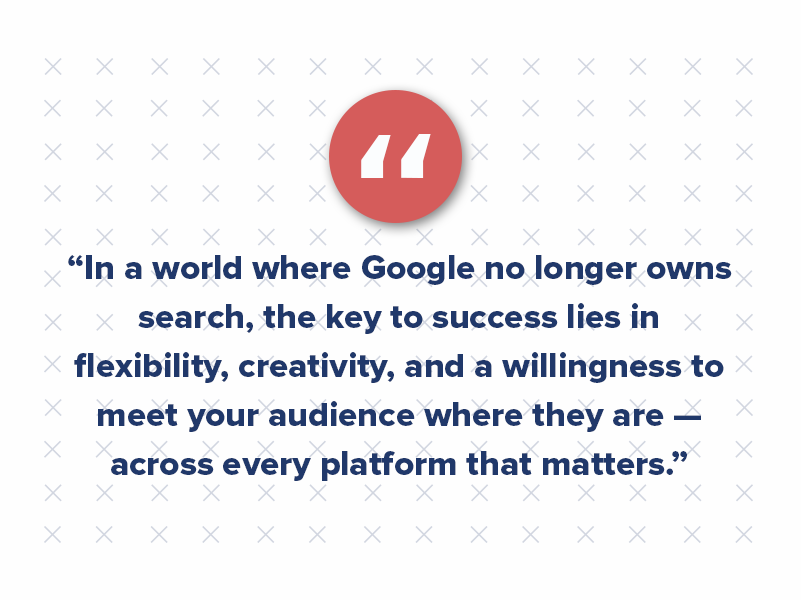
Back to the Basics: The Era of New SEO
The search and content landscape for multifamily marketing is undergoing its most profound shift in decades. Generative AI, alternative search platforms, and evolving user behaviors are rewriting the rules that many of us grew comfortable with. As an executive, it’s easy to feel a bit of uncertainty (or even skepticism) amid all the rapid change. But within this upheaval lies opportunity.
The key is to embrace the change strategically, without losing sight of timeless marketing truths. If there’s one theme that emerges from examining these trends, it’s a sort of “back to basics” by way of the future.
Yes, the tools and platforms are changing — from Google’s SGE, to TikTok search, to ChatGPT referrals — but what those algorithms and users ultimately seek remains consistent: relevance, value, and trust. In a world where AI can generate content by the ton, originality and authenticity become your trump cards.
For multifamily marketers, the mandate is clear: diversify and double down. Diversify your SEO approach beyond Google — optimize for that “search-everywhere” reality where renters might find you on Instagram, YouTube, or an AI assistant as much as on a SERP. But double down on what makes your brand stand out — your unique expertise, your data, your community of residents (who can advocate for you), and your human touch.
Practically, this means your marketing team’s playbook for the next 12 months might include actions like these:
- Conduct a Content Audit for Originality: Review your blog, website, and social content. How much of it is saying the exact same thing as your competitors (or what an AI could scrape together)? Identify places to inject original research in SEO content — perhaps commissioning a renter survey, analyzing your internal data for trends (e.g., “move-in rates are highest in Q3” or “pet owners stay 6 months longer on average”), or creating interactive content (like a rent calculator or neighborhood quiz). This original content will not only engage readers but also earn backlinks and citations that improve your Google SEO and even your presence in AI summaries.
- Build a UGC and Community Strategy: Make it easy and rewarding for your residents to leave reviews, share on social, and participate in testimonials. This might involve reputation management software or simply more active community management on your part. Remember, every star rating and review snippet can bolster your brand authority in SEO by signaling trust to algorithms (and humans!). As we saw, authenticity is king, and your residents can speak to that better than anyone.
- Train Your Team (and Yourself) on AI: Rather than fearing AI tools, empower your marketing team to use them wisely. AI can assist with keyword research (e.g., using ChatGPT to brainstorm question variants people might ask), help repurpose content (turn a blog post into a tweet thread or a video script), and handle mundane tasks — freeing your humans to focus on strategy and creativity. Establish guidelines for AI-generated content to ensure it meets your quality standards and is transparent. By weaving AI into your workflows, you stay efficient and signal that your organization is forward-thinking.
- Stay Educated on SEO Developments: The pace of change in search marketing is blistering. What Google rolls out this month might change by next quarter. Consider allocating time for your team to follow SEO news or even engage with SEO communities. When Google makes a major change (like an SGE update or an algorithm tweak), have a quick internal review of how it might affect your properties’ web traffic and lead flow. In short, keep your finger on the pulse. The companies that adapt fastest often gain a competitive edge.
- Refocus on Metrics that Matter: Lastly, rethink how you measure marketing impact in this new era. Traditional metrics like organic traffic and click-through rate are still important, but we might need to add new KPIs to the dashboard. For example, if zero-click searches rise, you might track “brand visibility” — such as how often your brand appears in search results or is mentioned by AI, even if a click doesn’t occur. You might track engagement on social platforms as part of SEO success (since those platforms drive search discovery). And of course, bottom-line metrics like lead volume, conversion rate, and occupancy rate remain the ultimate judges of success. Ensure that even as you try new approaches, you tie your efforts back to tangible business outcomes (leases signed, inquiries, tours booked). Upper management will appreciate that you’re innovating and staying accountable to results.
Navigating this new SEO landscape requires a blend of openness and steadfastness. Be open to the new: new platforms, new techniques, new consumer habits. Experiment with that TikTok idea, test a voice-search optimized FAQ, explore a partnership with local influencers, or try a pilot using AI for a content series. But remain steadfast in your commitment to your brand’s core value proposition and authenticity.
Technology will continue to evolve, but the fundamental need for trust and authority in marketing does not change. Generative AI and Google’s evolving search might reshape how SEO is done, but they don’t change why SEO is done — to connect your offering with the people who need it, in the moments they are searching.
The path forward is to adapt boldly while carrying forward the lessons of what truly resonates with renters. Do this, and you won’t just survive the changing SEO game; you’ll lead it, human touch and all, into the future of multifamily marketing.





